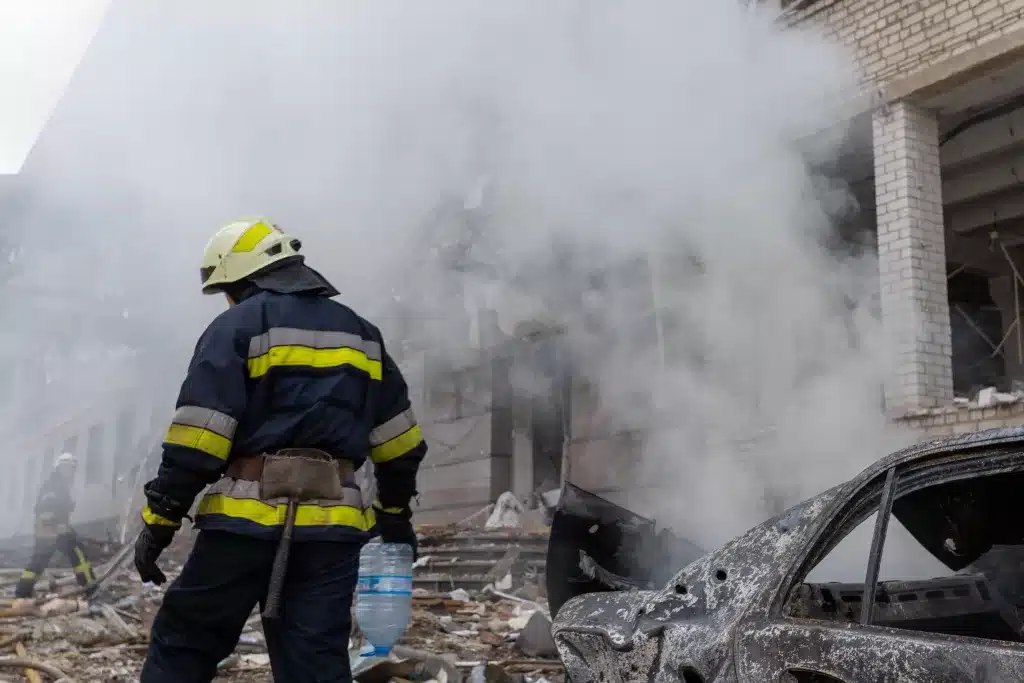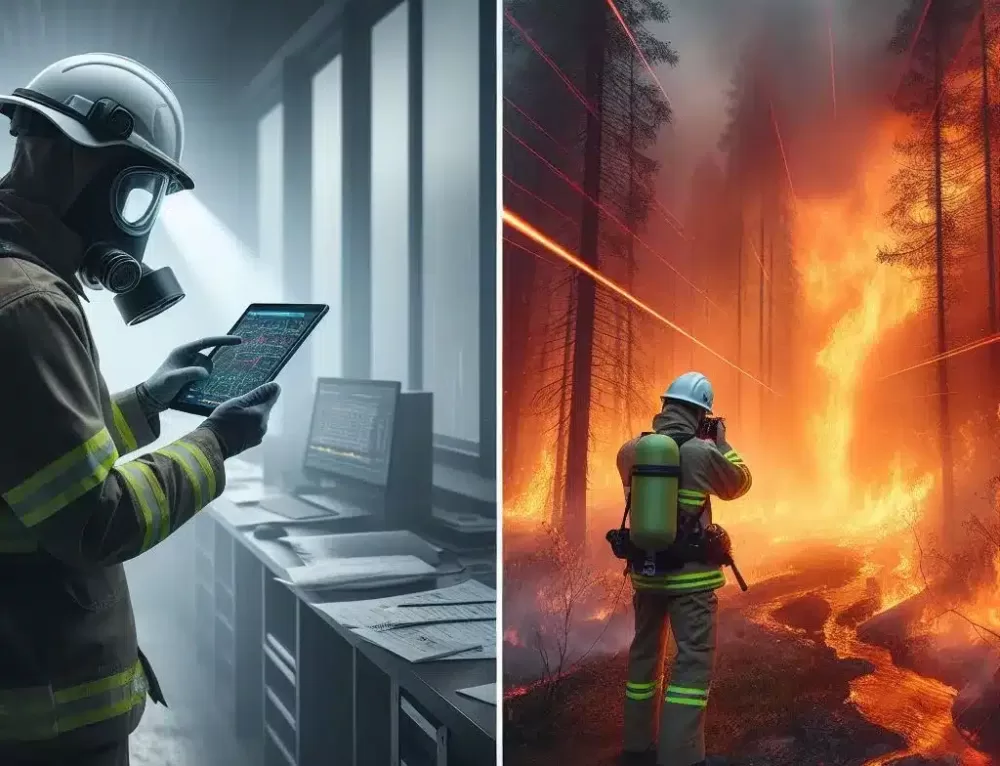In our modern world, fire safety is a topic that should never be taken lightly. From homes to workplaces, understanding the causes, prevention, and preparedness of fire incidents is paramount. In this comprehensive guide, we will delve into the fundamentals of fire safety, equipping you with the knowledge and tools to protect yourself and others.
When it comes to fire safety, prevention is the key. By identifying common causes of fires, such as faulty wiring, cooking accidents, or careless handling of flammable materials, we can take proactive measures to mitigate the risks. From installing smoke detectors and fire extinguishers in strategic locations to practicing safe cooking habits, there are various steps we can all take to minimize the likelihood of a fire igniting.

However, despite our best efforts, fires can still happen. That’s why being prepared is just as crucial as prevention. Understanding the proper procedures for evacuation, having an emergency plan in place, and knowing how to use a fire extinguisher effectively are essential skills that everyone should possess.
Join us on this informative journey as we navigate the intricacies of fire safety. Together, let’s create a safer environment for ourselves and our loved ones.
The importance of fire safety
Fires can cause devastating losses, including property damage, injuries, and even loss of life. That’s why it’s essential to prioritize fire safety in all aspects of our lives. Whether you’re at home, work, or out in public, having a solid understanding of fire safety can mean the difference between life and death. By taking the time to educate ourselves and implement preventive measures, we can significantly reduce the risk of fires and their potentially catastrophic consequences.
Common causes of fires
To effectively prevent fires, it’s crucial to understand their common causes. Faulty wiring, cooking accidents, and careless handling of flammable materials are among the leading culprits. Electrical issues, such as overloaded circuits or frayed wires, can spark fires. In the kitchen, unattended cooking or grease fires can quickly get out of control. Additionally, improper storage or handling of flammable liquids can lead to dangerous situations. By identifying these causes, we can take proactive measures to mitigate the risks.
Understanding fire behavior
Before diving into prevention and preparedness, it’s important to understand the behavior of fires. Fires require three elements to ignite: heat, fuel, and oxygen. This is known as the fire triangle. By removing any one of these elements, fires can be extinguished. Different types of fires require specific methods of suppression, so understanding the behavior and characteristics of different fires is crucial. This knowledge will help us make informed decisions when it comes to prevention and preparedness.
Fire prevention tips for the home
Prevention is the key to fire safety. In our homes, there are several steps we can take to minimize the likelihood of a fire igniting. Installing smoke detectors in every room and regularly testing them can provide early warning signs of a potential fire. Keeping flammable materials away from heat sources, using electrical appliances responsibly, and practicing safe cooking habits are also important preventive measures. Additionally, having a fire extinguisher readily available and knowing how to use it effectively can make a significant difference in containing a small fire before it spreads.
Fire prevention tips for the workplace
Fire safety is not limited to our homes; it’s equally important in the workplace. Employers have a responsibility to ensure a safe working environment for their employees. This includes regular maintenance of electrical systems, proper storage of flammable materials, and clear evacuation plans. Implementing fire safety training programs and conducting regular drills can also help employees understand their roles and responsibilities in the event of a fire emergency. By creating a culture of fire safety in the workplace, we can protect both people and property.
Essential fire safety equipment
Having the right fire safety equipment can mean the difference between a small incident and a full-blown disaster. Smoke detectors, fire extinguishers, and fire blankets are essential tools that should be present in every home and workplace. Smoke detectors can alert us to the presence of smoke, giving us precious time to evacuate. Fire extinguishers, when used correctly, can help control small fires before they escalate. Fire blankets are particularly effective for smothering fires involving people or flammable liquids. Understanding how to use these tools and ensuring they are in good working condition is crucial for fire safety.
Creating a fire escape plan
In the event of a fire, having a well-thought-out escape plan can save lives. Every household and workplace should have a clearly defined escape route that is known to all occupants. This includes identifying multiple exits, ensuring they are easily accessible, and practicing evacuation drills regularly. It’s also important to designate a meeting point outside the building to ensure everyone is accounted for. By planning ahead and rehearsing the escape plan, individuals can react quickly and calmly during a fire emergency.
Fire safety training and education
Education is fundamental to fire safety. Knowing how to prevent fires and respond appropriately in emergency situations can make a significant difference. Fire safety training programs, both for individuals and organizations, are widely available and should be pursued. These programs cover topics such as fire prevention, evacuation procedures, and proper use of fire safety equipment. By investing in education, we empower ourselves and others to take proactive measures to prevent fires and minimize their impact.
Fire safety regulations and codes
Fire safety regulations and codes exist to ensure the safety of buildings and occupants. These regulations vary by jurisdiction but generally cover areas such as building construction, fire prevention systems, and emergency preparedness. It’s important for individuals and organizations to familiarize themselves with these regulations and comply with them. Regular inspections and maintenance of fire safety systems, such as sprinklers and fire alarms, are essential to meet these requirements. By adhering to regulations, we contribute to creating a safer environment for everyone.
Conclusion: Taking action for fire safety
Fire safety is a shared responsibility. By understanding the causes, prevention, and preparedness of fires, we can take proactive measures to protect ourselves and others. From installing smoke detectors and fire extinguishers to creating and practicing fire escape plans, every step counts. By investing in education, staying informed about fire safety regulations, and promoting a culture of fire safety, we can create a safer environment for ourselves and our loved ones. Let’s take action today and prioritize fire safety in all aspects of our lives.
Remember, fire safety is not something to be taken lightly. It’s a matter of life and death. Take the time to educate yourself, implement preventive measures, and be prepared for emergencies. Together, let’s make fire safety a top priority.





